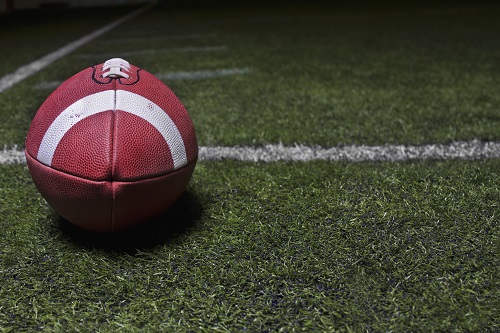

Major League Football. The Pacific Pro League. Arena Football. Alliance of American Football. The United Football League. The US Football League. What do they have in common? They’re all in the graveyard of failed football leagues.
But last month, the US Football League announced its return (it was last seen between 1983 and 1986).
According to Sports Pro Media, the league is set to return in spring of 2022 with a minimum of eight teams for its comeback season. The USFL said that more details about the franchise cities, head coaches, and game schedules will be announced at a later date, but that it has retained rights to key original team names.
Wikipedia notes, “Despite claims that this was a reactivation of the old league, no figures from the original league are involved in the new league,” which has new principals.
But there are big plans in the works. According to a press release, FOX Sports will serve as the official broadcast partner for the USFL. FOX Sports also owns a minority equity stake in the company that owns the USFL.
The USFL originally launched in 1983 and played its games over the summer, during which time it performed rather well in drawing fans; with 12 teams operating, the league was able to lure 2.7 million fans to watch football in the off-season, according to Bleacher Report. Their games averaged 25,031 fans each and were led by the Denver Gold who were able to draw in over 40 thousand fans per home game. And it wasn’t without its stars. The USFL featured some up-and-coming football talent, many of whom would go on to impressive careers, including quarterback Doug Flutie, running back Herschel Walker and quarterback Steve Young.
Unfortunately, the league changed ownership – which led to questionable decision-making, including the idea of moving to a fall/winter schedule. (Two of the league’s owners convinced the rest that directly competing with the NFL would lead to a merger of the two leagues and that the USFL teams would be worth $70 million each, then the going rate for a NFL franchise).
However, that didn’t happen. When the USFL went up against the NFL, attendance and interest went down, many clubs declared bankruptcy and the league closed its doors for good in 1986, ultimately having lost $163 million. (Interesting note: On the advice of one of the league’s owners, the USFL filed an antitrust suit against the NFL seeking $1.6 billion in damages, arguing a monopoly power in professional football, but was only awarded $1).
The new owners have announced they have retained the rights to key original team names. The USFL website lists information as coming soon and there is definite interest on the part of the football-consuming public.
"I'm extremely passionate about football and the opportunity to work with FOX Sports and to bring back the USFL in 2022 was an endeavor worth pursuing," said Brian Woods, co-founder of the new USFL and founder and CEO of The Spring League (TSL), a professional development league. "We look forward to providing players a new opportunity to compete in a professional football league and giving fans everywhere the best football viewing product possible during what is typically a period devoid of professional football."
"The relaunch of the USFL is a landmark day for football fans and FOX Sports," said Eric Shanks, CEO and Executive Producer, FOX Sports. "Football is in our DNA and the return of this innovative and iconic league is a fantastic addition to our robust slate of football programming."
While the owners seem excited about the concept, one hard fact remains: No matter how innovative its promoters have thought spring football could be, it does not seem to resonate on a large scale with American fans. In addition to the multitude of leagues that have gone belly-up (World Football League, the United Football League, the Fall Experimental Football League, Major League Football, the Alliance of American Football, Pacific Pro League, the Continental Football League, the All-American Football League, the Stars Football League, multiple arena leagues and plenty of others through the years), there are ongoing problems even with leagues that are still in business, or at least appear to be in business on paper.
The XFL, which went out of business, then came back into the game only to be stalled by the pandemic, made a promising start a few months back, having named movie star Dwayne Johnson as an owner and teasing the idea of working with the Canadian Football League, but the latter concept appears to have lost momentum. The XFL had been planning to return to play in 2022 – but no schedule or teams were announced and the CFL (clearly not waiting on a merger or other development) has been returning to its own field after the 2020 hiatus.
Notes XFL News Hub: “It looks unlikely that the XFL will be returning to the field of play in 2022. Neither the XFL’s new ownership group nor XFL President and CEO Jeffrey Pollack has made that announcement official yet, but as we sit here in late May of 2021, it seems like a foregone conclusion. Time has run out on that possibility. The handwriting’s been on the wall since the XFL called off their Chief Football Officer search in mid-stream earlier this year.”
In other words, XFL might be waiting for word from the CFL but the CFL isn’t waiting for anyone.
And even women’s football (the Lingerie League that turned into the Legends League that turned into the Extreme League that rebranded as the X League) hasn’t really generated much interest, despite having Mike Ditka as an owner. The league cancelled its 2020 season, then its 2021 season and now says it is expecting to kick off in 2022. Its links to schedules, tickets and teams are still listed as “coming soon;” however, its X-wire with news has substantive updates and its merch shop is up and running.
And, noted the Ringer, the problems that always plague spring football haven't changed: “The one problem with starting a league with the express goal of serving as the NFL’s primary minor league is that the NFL does not necessarily want to have a minor league. At one point, the NFL financed its own developmental league, NFL Europe. That league served the awkward purpose of both trying to develop players and stoke interest in American football overseas, and with a few exceptions, it wasn’t particularly successful at either. Since shuttering the European league in 2007, the NFL hasn’t really expressed any interest in having a developmental property.”
The USFL, should it be able to create an innovative model, may have the success others have been lacking; however, the clock is ticking and fans will be looking for concrete proof of progress.

